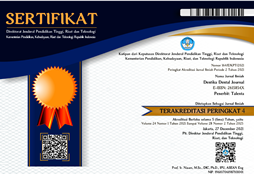SIFAT OSTEOINDUKTIF SILIKA AMORPHOUS SEKAM PADI
OSTEOINDUCTIVITY OF AMORPHOUS SILICA FROM RICE HUSK
DOI:
https://doi.org/10.32734/dentika.v16i2.1823Keywords:
bone remodeling, bone graft, scaffold, silicaAbstract
Currently, bone graft is recommended to improve and support the biological repair of bone defects properly. Bone graft was found to cause death in the donor area, long pain, infection, cosmetic deformity, hematoma, the amount of blood loss, injury or damage to the nervous in the donor area. Synthetic bone graft material was developed as a scaffold that serves to template the formation of bone. The ideal scaffold should be biodegradable, osteoconductive and osteoinductive. During there graft materials have not optimally provide the morphological, mechanical properties, biocompatibility and biodegradation, and osteoinductive-osteoinductive. Silica is proven to support and promote primary osteoblast growth, synthesis of matrix proteins, collagen type I, so that it can cause bone formation. Rice husk contains of silica is high enough. Because of abundant material and its potential in bone formation, needs to be done research on silica from rice husk in the manufacture of synthetic bone graft. The purpose of this study was to analyze the amorphous silica from waste rice husks as synthetic bone graft material (scaffold), especially against osteoblasts proliferation. Type of study was an experimental laboratory. This research was conducted by isolating the amorphous silica from rice husk. Primary osteoblast cultures derived from calvaria rats aged 2 days, growing in Alpha Modified Eagle Medium (α-MEM) (as negative control), α-MEM that in condition with 58S silica (as positive control group) and α-MEM condition with silica from rice husk (as treatment group). Osteoblast proliferation was observed with Quick Cell Proliferation Assay Kit for 7 and 14 days. The result showed that the rice husk silica was significantly (p <0.05) osteoinductive, osteoblast cultures demonstrated that its proliferation was higher in the groups that were implanted in the culture medium condition with 58S silica. In conclusion, rice husk amorphous silica is potentially osteoinductive scaffold for synthetic bone graft material.


















